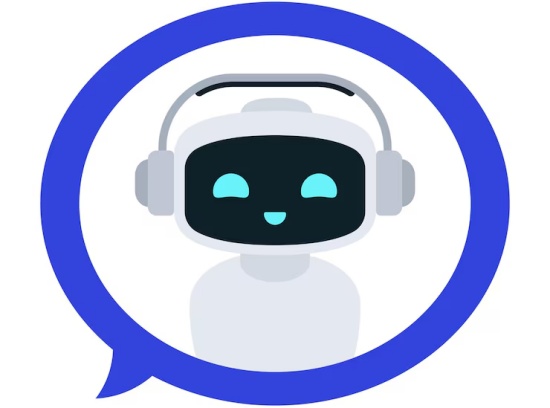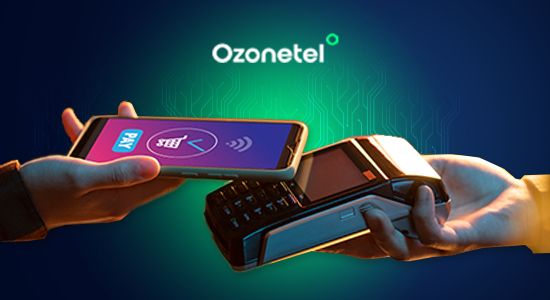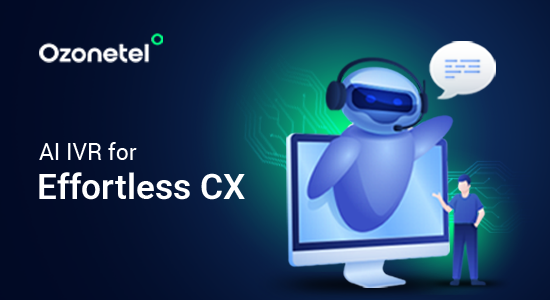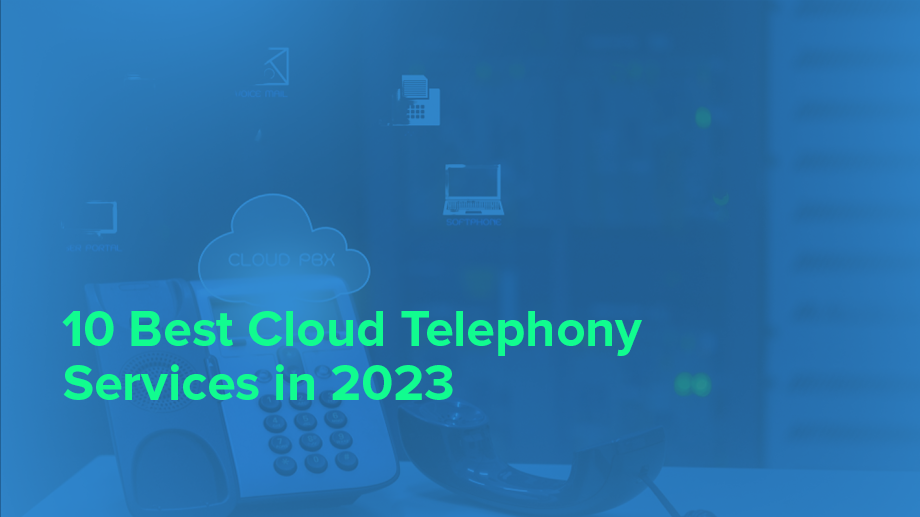- Resources
- Hidden Barriers to Customer Loyalty Your C-Suite May Not See
Hidden Barriers to Customer Loyalty Your C-Suite May Not See

Customers rarely announce their departure; they simply stop engaging. And yes, your call center metrics might indicate strong performance—high customer satisfaction scores, robust retention rates, and positive feedback.
However, these numbers can mask underlying issues that gradually erode customer loyalty. Hidden barriers—subtle, often overlooked obstacles—can disrupt the customer experience, leading to dissatisfaction and eventual churn.
In this blog, we’ll explore the overlooked factors that can undermine customer loyalty and discuss some proactive steps that you can take to strengthen customer relationships and improve retention. Read along!
In this article, we will explore:
What is Employee Experience?
Employee Experience (EX) is the overall perception employees have of their journey within an organization. It encompasses every interaction and touchpoint, from recruitment and onboarding to daily responsibilities, support systems, and eventual offboarding.
The Hidden Barriers Your C-Suite Might Be Missing

Apart from just offering rewards or discounts, customer loyalty is about understanding and addressing the subtle barriers that can erode trust and satisfaction. Many organizations overlook these hidden obstacles, which can significantly impact customer retention.
To make sure you are not one of those, here are some key hidden barriers that you might be overlooking in your organization:
Fragmented Customer Data Across Departments
When customer information is scattered across different departments, it becomes challenging to provide a consistent experience. This fragmentation can lead to repetitive interactions and a lack of personalized service.
According to the Integrated Loyalty Report 2025, 47% of loyalty professionals identify integration issues as the top barrier to success, often blocking innovation and compromising customer experiences.
Over-Reliance on Automation Without Human Touch
While automation can improve efficiency, excessive dependence on it may lead to customer frustration. A survey revealed that 72% of consumers found interactions with chatbots to be a “complete waste of time,” highlighting the limitations of automated systems in addressing complex customer needs.
Neglecting Feedback from Existing Customers
Prioritizing new customer acquisition over addressing the concerns of existing customers can be detrimental. A study highlighted that 92% of millennials and around 87% of Gen X consumers would switch to a different company due to poor customer service.
For instance, a loyal customer who consistently provides feedback about a recurring issue but sees no resolution may feel undervalued and consider alternative brands.
Inconsistent Customer Experience Across Channels
Customers expect a seamless experience, whether they’re interacting online, in-store, or via phone. However, disconnected systems make it impossible to track customer journeys effectively across touchpoints. For instance, think about a customer who receives conflicting information about a product return policy from different channels, leading to frustration.
Inadequate Personalization in Customer Interactions
Generic interactions can make customers feel like just another number. According to reports, 80% of consumers want personalization from retailers, and successful omnichannel personalization can lead to a 5-15% increase in revenue across a brand’s entire customer base. For example, a customer receiving irrelevant product recommendations may feel that the brand doesn’t understand their preferences.
Failure to Act on Customer Feedback
Collecting feedback without implementing changes can frustrate customers. Not acting on customer feedback diminishes trust and can lead to customer attrition. For example, if customers consistently report issues with a product feature and no improvements are made, they may feel their opinions are disregarded.
Ignoring the Emotional Aspect of Customer Experience
Customers’ emotional responses to their experiences significantly influence their loyalty. A study by Gallup indicates that companies making an emotional connection with customers outperform competitors by 85% in sales growth. For instance, a customer who feels a brand understands their values and preferences is more likely to remain loyal, even in the face of minor issues.
What Leadership Can Do Differently

Just identifying the above-mentioned hidden factors isn’t enough. Most CX efforts fail when leadership treats it as a department’s job. For real impact, leaders need to embed customer thinking into the way teams operate—from setting goals to measuring performance and driving culture. Some ways to do this are:
Champion a Unified Customer Experience (CX) Architecture

A unified customer experience architecture involves aligning all customer touchpoints—such as the website, mobile app, and customer service—to provide a consistent and seamless experience. This approach helps reduce friction and confusion for customers.
For example, Ozonetel offers a unified commerce platform that enables retailers to deliver consistent experiences across all channels. By integrating backend systems under a single data model, businesses can eliminate technological roadblocks, leading to improved customer satisfaction and increased revenue.
Watch this video to learn how BigBasket used Ozonetel to build an excellent customer experience.
How You Can Do It:
- Map out all customer interaction points and identify inconsistencies.
- Integrate communication channels to provide a seamless experience.
- Train staff to handle interactions across multiple platforms.
Embrace AI & Analytics
If you want to deliver consistent, relevant, and personalized experiences across every touchpoint, relying on gut feeling or surface-level data won’t cut it. AI and analytics help you decode customer behavior at scale—whether it’s predicting what users might need next or identifying patterns that reveal drop-offs or dissatisfaction.
Spotify is a prime example of using AI and analytics to personalize at scale. As users stream music and podcasts, Spotify collects deep first-party data—listening habits, skips, replay rates, time of day, device used—and uses it to make real-time content recommendations. This level of personalization drives stickiness and long-term engagement.
Additionally, they integrate direct user feedback through in-app surveys, ratings, and reviews. Combined with qualitative research like interviews and usability testing, this gives them a 360° view of the customer experience.
How You Can Do It:
- Collect behavioral data through your app or site to understand what users are actually doing—not just what they say.
- Look beyond vanity metrics and focus on patterns—search drop-offs, browsing habits, repeat actions—that reveal intent.
- Pair product usage stats with user interviews or support conversations to get a richer understanding.
- Use what you learn to update recommendations, content, navigation, and offers in real time.
Prioritize Voice of Customer

Understanding what your customers truly think, want, and feel is essential—not just during moments of dissatisfaction but throughout their entire journey with your brand. The Voice of Customer (VoC) strategy is about capturing those insights across different touchpoints and turning them into action.
Starbucks offers a great example of how to do this at scale. The company uses multiple channels to collect real-time customer feedback on everything from in-store experience to menu preferences.
Through its Starbucks app and rewards program, it gathers detailed data on customer purchase patterns, foot traffic, peak hours, and product popularity. It also listens actively on social media, conducts focus groups, and sends surveys to build a comprehensive understanding of its customers.
How You Can Do It:
- Combine app-based surveys, NPS forms, social listening, and customer interviews to get a fuller picture.
- Offer real-time prompts in your app or website to understand customer sentiment when they interact with your brand.
- Prioritize VoC in product updates, customer service policies, and operational decisions. Show your customers their input matters.
Balance Automation with Empathy

Automation improves efficiency—but if you’re not careful, it can strip out the human connection your customers value. When it comes to CX, it’s not just about fast responses or self-service. Customers want to feel heard, especially when they reach out with a problem, confusion, or feedback. This is where empathy and emotional intelligence come in.
LEGO is a great example of balancing tech with empathy. It conducts ethnographic studies, including observing how kids interact with toys in real environments, to inform product design and experiences. This helps the brand develop meaningful, relevant experiences rather than generic ones.
Beyond observation, LEGO runs focus groups with parents and children to gather input on design ideas. They also engage deeply with their online fan communities, giving customers the space to co-create and share feedback.
How You Can Do It:
- Use automation to handle repetitive tasks like order tracking or FAQs, but leave complex queries to humans who can respond with empathy.
- Create structured ways to listen—such as moderated community groups, qualitative research, or in-depth feedback sessions—not just feedback forms.
- Don’t ignore emotional context. AI may detect sentiment, but it’s human agents who can de-escalate frustration or respond with understanding.
- Empower your support teams with context (previous interactions, preferences, etc.) so they can offer responses that actually feel personal.
- Involve customers in co-creation through forums, early-access programs, or interactive feedback loops—this adds value to both sides.
Encourage a Culture of Continuous Improvement

Customer expectations change quickly—and so should your CX strategy. Encouraging a culture of continuous improvement means building systems to regularly capture feedback, learn from it, and act on it without delay. This isn’t just about reacting to issues—it’s about proactively spotting friction points and opportunities to do better.
Marriott has built this mindset into its guest experience strategy. Through its loyalty program, the brand captures detailed information on guest preferences and stay history. It also runs post-stay surveys that dig into guest satisfaction, helping identify which aspects of service consistently delight—or disappoint.
Beyond direct feedback, Marriott monitors online reviews on platforms like TripAdvisor, Expedia, and Google, using that data to spot patterns and address service gaps before they grow into bigger issues. This multi-layered feedback loop enables Marriott to maintain high service standards and strengthen guest loyalty over time.
How You Can Do It:
- Build feedback collection into the post-purchase experience—automated surveys, review requests, or NPS follow-ups are a good starting point.
- Encourage team-wide accountability for CX. Customer feedback shouldn’t live only with marketing or support—it should reach product, operations, and leadership, too.
- Create a feedback-to-action loop. Make it clear internally how feedback turns into tangible changes, whether it’s UI tweaks, policy updates, or support script improvements.
- Don’t just check ratings during a crisis—set up alerts and regular audits of review sites to catch and respond to sentiment shifts early.
Create Long-Term Value Through Experiences

The most effective e-commerce brands are those that use technology to remove friction—not emotion—from the customer journey. That means using automation to support your teams and simplify experiences while still maintaining empathy where it matters.
For example, BigBasket doesn’t just invest in fast deliveries or intuitive interfaces. Instead, it focuses on understanding what its customers need at a granular level and supports that understanding with technology and human connection.
To manage 15 million monthly orders with 85% customer retention, BigBasket combines real-time customer feedback with advanced tools like route optimization, intelligent planning, and omnichannel support. They partnered with Ozonetel to build a seamless experience that empowers agents to offer helpful, informed support while reducing the need for repetitive queries.
“We employ a variety of methods to grasp customer priorities comprehensively. This involves analyzing customer service data, conducting regular NPS surveys, and digging deep into feedback and product concerns,” shares Vipul Parekh, Co-founder, BigBasket.
Read the full case study here!
How You Can Do It:
- Use automation to handle repetitive, low-value queries, like order tracking or FAQs—freeing up human agents for more complex, high-empathy interactions.
- Invest in tools that empower agents, such as real-time analytics, conversation histories, and intelligent routing, so they can resolve issues quickly and personally.
- Avoid isolated automation. Connect chatbots, email, and voice systems into one unified platform so customers never have to repeat themselves.
- Capture the “why” behind interactions. Go beyond ticket volume and resolution time to understand sentiment, intent, and friction points that might not show up in your metrics.
Conclusion
Customer loyalty is built (and lost) in the everyday moments most teams overlook. It’s in the time a chatbot loops a customer endlessly or when a delayed delivery goes unexplained. These are the gaps where frustration grows, and trust erodes.
Leaders often rely on dashboards that show high-level trends—but what about the micro-frictions your customers face every day? What’s slipping through the cracks between service channels or buried in customer verbatims no one’s reading?
For C-level leaders, the challenge is to dig deeper and ask tougher questions:
- Where are customers struggling, even if they’re not complaining?
- What silent signals are agents, reviews, or churn patterns revealing?
- Are we really removing effort from the journey—or just moving it around?
This is because loyalty is earned quietly—in the details, the follow-through, and the empathy you show when no one is watching. That’s where long-term value is created. And that’s where leadership can make the difference.
Want to know more about how you can improve CX and earn customer loyalty? Get in touch with us now!
Benefits of using IVR
A well-implemented IVR system streamlines customer interactions, improves efficiency, and reduces operational costs. But beyond just automating responses, it plays an important role in enhancing customer satisfaction and optimizing business resources. Here’s how IVR benefits your business:
1. 24/7 Automated Customer Assistance
Not all customer queries require a live agent, and not all businesses can afford round-the-clock staffing. IVR bridges this gap by offering automated support for frequently asked questions, such as account balances, payment confirmations, or appointment scheduling. Even after business hours, customers can get essential information, improving service availability without increasing operational costs.
2. Faster Call Handling and Reduced Wait Times
Long wait times often lead to customer frustration and abandoned calls. IVR minimizes this by automatically directing callers to the right department or providing instant answers to common inquiries. Instead of waiting for an available agent, customers can quickly navigate the system to get the assistance they need. This improves overall service efficiency while reducing customer drop-offs.
3. Streamlined Call Routing for Better Service
A well-structured IVR system enhances the customer journey by making interactions smooth and hassle-free. Instead of waiting on hold or being transferred multiple times, customers can quickly find the right solution. Whether checking order status or requesting a callback, IVR ensures they receive fast and accurate assistance, leading to higher satisfaction and brand loyalty.
4. Increased Productivity for Customer Support Teams
Customer service teams often deal with a mix of routine questions and complex issues. IVR helps by filtering out simple inquiries—like checking store hours or resetting passwords—so agents can focus on solving more critical concerns. This reduces burnout among support teams, allowing them to dedicate more time to providing personalized and high-quality service to customers who need it most.
5. Cost Savings Through Automation
Hiring and training customer support agents can be expensive, especially when handling routine inquiries. IVR automates repetitive tasks like processing payments, tracking orders, and verifying account details. By reducing the need for additional staff, businesses can lower payroll expenses while maintaining a seamless customer experience. The cost savings from IVR can then be redirected toward other business improvements.
6. Scalable Support for Business Growth
As businesses expand, so do customer inquiries. IVR systems can handle a growing call volume without requiring additional staff or infrastructure. Whether dealing with seasonal spikes in calls or a permanent increase in customer demand, IVR ensures that support remains efficient and uninterrupted. This scalability makes it a cost-effective solution for businesses planning for long-term growth.
7. Data-Driven Call Analytics for Service Optimization
Every customer interaction provides valuable data that can help businesses refine their support strategy. IVR systems track call durations, menu selections, and customer behaviors to identify common pain points. By analyzing this data, businesses can optimize call flows, improve self-service options, and fine-tune their IVR menus to create a better overall experience.
8. Consistent and Professional Customer Interactions
Unlike human agents who may have varying communication styles, IVR ensures a consistent and professional tone for every customer interaction. This standardization improves service reliability and reinforces brand identity, providing a seamless experience regardless of when or how often customers call.
9. Reduced Human Errors in Customer Interactions
IVR eliminates the risk of human errors in routine tasks like entering customer details, processing transactions, or verifying accounts. By automating these processes, businesses can ensure accuracy, reducing the chances of miscommunication or service delays.
What is IVA?

An Intelligent Virtual Agent (IVA) is AI-powered software designed to interact with customers through natural conversations. Unlike traditional automated systems, IVAs understand and respond to customer queries using Natural Language Processing (NLP) and Machine Learning (ML), making interactions more seamless and human-like.
IVAs are commonly used in customer service, contact centers, and self-service platforms to automate tasks such as answering inquiries, resolving issues, processing transactions, and routing calls—reducing the need for human intervention. They can work across multiple channels, including voice, chat, email, and SMS, ensuring consistent customer support.
How do IVA systems work?
IVA systems bring AI-powered automation to customer interactions, helping businesses improve efficiency and deliver a seamless service experience. These systems offer features such as:
- Conversational AI: IVAs use Natural Language Understanding (NLU) to interpret spoken or written language, allowing them to have fluid and natural conversations. Unlike chatbots, which rely on predefined responses, IVAs analyze customer intent and provide meaningful replies based on context.
- Intelligent Call Routing: Instead of relying on static menus like Interactive Voice Response (IVR) systems, IVAs route customer inquiries based on real-time intent detection. This ensures that callers are quickly connected to the right department or resolution without unnecessary steps.
- Seamless Integration: IVAs connect with Customer Relationship Management (CRM) platforms, payment gateways, and databases, allowing them to access real-time customer information.
- Self-Service Capabilities: Customers can complete tasks such as:
- Checking account balances
- Making payments
- Booking appointments
- Requesting refunds or order updates
- Security and Compliance: Many IVA systems support voice biometrics for secure authentication and comply with industry regulations such as PCI DSS (for secure transactions) and HIPAA (for handling healthcare data).
Benefits of using IVA
With their ability to handle complex queries, integrate with business tools, and adapt across multiple channels, IVAs help businesses provide faster, more accurate, and personalized support. Some key benefits include:
1. 24/7 Support Without Wait Times
An IVA operates round the clock, meaning your customers can get support at any time without being restricted by business hours. Whether it’s a midnight billing inquiry or an early morning appointment request, the system ensures that customers receive immediate assistance. This continuous availability not only boosts customer satisfaction but also increases engagement by offering help when customers need it most.
2. Instant Query Resolution and Reduced Workload for Agents
Customers no longer have to wait in long queues for an agent to answer simple queries. An IVA immediately understands the customer’s intent and provides relevant responses without delays. Whether it’s checking an account balance, processing a refund, or providing order updates, an IVA can complete these tasks within seconds—freeing up live agents for more complex issues.
3. Personalized and Context-Aware Interactions
Unlike traditional automated systems that offer pre-set responses, IVAs analyze customer data in real-time to offer tailored responses. By integrating with CRM systems, IVAs recognize returning customers, recall past interactions, and provide relevant solutions without requiring customers to repeat themselves. This level of personalization improves customer satisfaction and builds trust.
4. Cost Savings Through Automation
By automating repetitive and low-complexity tasks, IVAs reduce the need for a large customer support team—helping businesses save on operational costs. Fewer resources are spent on handling simple queries, allowing businesses to allocate human agents to higher-value interactions that require expertise and empathy.
5. Scalable Support for Peak Demand
During peak hours or seasonal surges, businesses often struggle to manage the influx of customer inquiries. An IVA scales instantly to handle an increasing number of interactions without affecting service quality. This ensures that every customer gets the assistance they need, regardless of demand fluctuations.
6. Seamless Omnichannel Customer Experience
Customers engage with businesses through multiple channels—phone, chat, email, and social media. An IVA connects across all these platforms to offer a consistent and unified experience. If a customer starts a conversation via chat and later switches to a call, the IVA retains the context, ensuring a smooth transition without loss of information.
7. Intelligent Sentiment Analysis for Better Support
IVAs don’t just understand words—they analyze tone, urgency, and sentiment to determine how a customer is feeling. If frustration is detected, the IVA can adjust its responses accordingly or escalate the query to a live agent for immediate attention. This helps businesses manage interactions more effectively and improve customer satisfaction.
8. Multilingual Support for Diverse Customer Bases
IVAs can communicate in multiple languages, making it easier for businesses to serve a diverse customer base. Whether customers prefer English, Spanish, or any other language, the IVA adapts, ensuring seamless communication and a better experience for non-native speakers.
9. Data-Driven Insights for Continuous Improvement
Every customer interaction with an IVA generates valuable insights. Businesses can analyze call patterns, common queries, and customer behavior to refine their support strategies. These insights help optimize workflows, enhance self-service options, and improve the overall effectiveness of the IVA system.
Choosing the Right Solution: Factors to Consider
IVRs are ideal for structured call flows and routine inquiries, while IVAs provide advanced AI-driven conversations and personalized support. If you’re unsure which system fits your business, consider the following factors:
When to Choose IVR?
IVR is a reliable choice when your business needs structured, menu-based automation to handle high call volumes efficiently. It works best for:
- Routine inquiries: Checking account balances, appointment confirmations, or basic FAQs.
- Call routing: Directing callers to the right department or agent based on predefined inputs.
- Budget-conscious solutions: IVRs have a lower upfront cost and require minimal AI integration.
- Basic speech recognition: Some IVRs can handle simple voice commands but lack advanced NLP capabilities.
When to Choose IVA?
An IVA is the better option if your business requires intelligent, human-like interactions with a focus on personalization and automation. It’s ideal for:
- Handling complex customer queries: IVAs can process natural language requests and understand the context.
- Personalized interactions: IVAs integrate with CRM and customer data platforms to provide tailored responses.
- Scalability and efficiency: They can handle large call volumes while reducing agent workload.
24/7 customer support: Unlike IVRs, IVAs engage in real-time conversations with users across multiple channels, ensuring round-the-clock service.
Set Up a Customizable, Intelligent IVR Solution With Ozonetel
Ozonetel offers a fully customizable and intelligent IVR system designed to enhance customer interactions and streamline call center operations. The IVR comes with key features such as multi-level call routing, self-service menus, personalized greetings, call recording, and analytics. The IVR system supports various input methods, including touch-tone (DTMF) and speech recognition, allowing callers to navigate menus using their voice or keypad. Additionally, Ozonetel’s IVR can be integrated with existing software through open APIs, facilitating seamless connectivity with CRM, ERP, chatbots, and analytics platforms.
Conclusion
When EX is strong, employees are engaged, motivated, and less likely to leave, which means less turnover, more productivity, and a culture people want to be part of. Leaders who invest in EX aren’t just keeping up with trends; they’re actively setting their companies up for a competitive edge in attracting and keeping top talent.
Take a close look at your current EX. Where are the gaps? What could be done better? Small improvements today can create a lasting impact tomorrow. A positive employee experience doesn’t just improve work for your team—it drives real results that lift the whole organization. So, let’s get moving on building an EX that truly shines.
Start your EX journey today by conducting employee surveys, implementing flexible work arrangements, and investing in employee development.
Customer loyalty isn’t just a metric—it’s a mindset. Discover how Ozonetel helps brands close CX gaps and build loyalty that lasts.
Frequently Asked Questions
An Intelligent Virtual Agent (IVA) is an AI-powered system that automates customer interactions using natural language processing (NLP) and machine learning. IVAs can handle complex queries, provide personalized responses, and integrate with multiple business systems to deliver seamless support across channels like voice, chat, email, and social media.
An Interactive Voice Response (IVR) system is a telephony technology that allows customers to interact with a menu-based system using keypad inputs or voice commands. IVR primarily routes calls to the right department or provides pre-recorded information, helping businesses manage call volumes efficiently. Unlike IVAs, IVRs are rule-based and do not understand natural language or context.
Yes, chatbots and IVAs are different. A chatbot is a basic rule-based system that responds to predefined commands and works primarily in text-based interfaces. An IVA, on the other hand, uses advanced AI, understands natural language, and can engage in complex, human-like conversations across multiple channels, including voice. IVAs offer a more intelligent and personalized experience compared to traditional chatbots.







